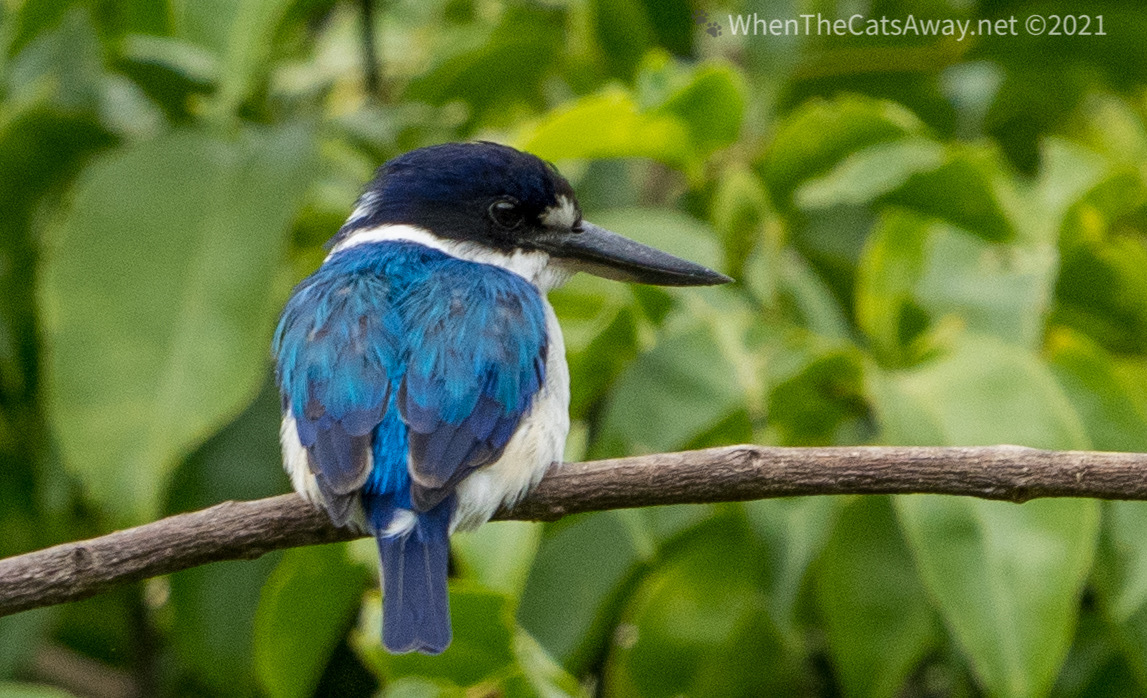Author: Mrs A
Location: Kinka Beach and Byfield National Park, Queensland, Australia
We said goodbye to Tannum Sands and Mark, Tassie, I and our uninvited mice drove up to Rockhampton then headed back inland to the coast again, heading to a little settlement called Kinka Beach It was a cool day with a strong southerly wind blowing, nicer behind glass than out exploring. But having not been out much the past few days we were keen to stretch the legs and set off, aiming for the Kinka Wetlands, a location rich in birdlife we had read about online.
Sadly the wetlands were not to be as we trundled down a very rough narrow road, which looked more like a stream after all the rain we had this past weekend. We gave up and decided to check out the beach instead, finding a stunningly wild setting with the forest stretching down to the sand.
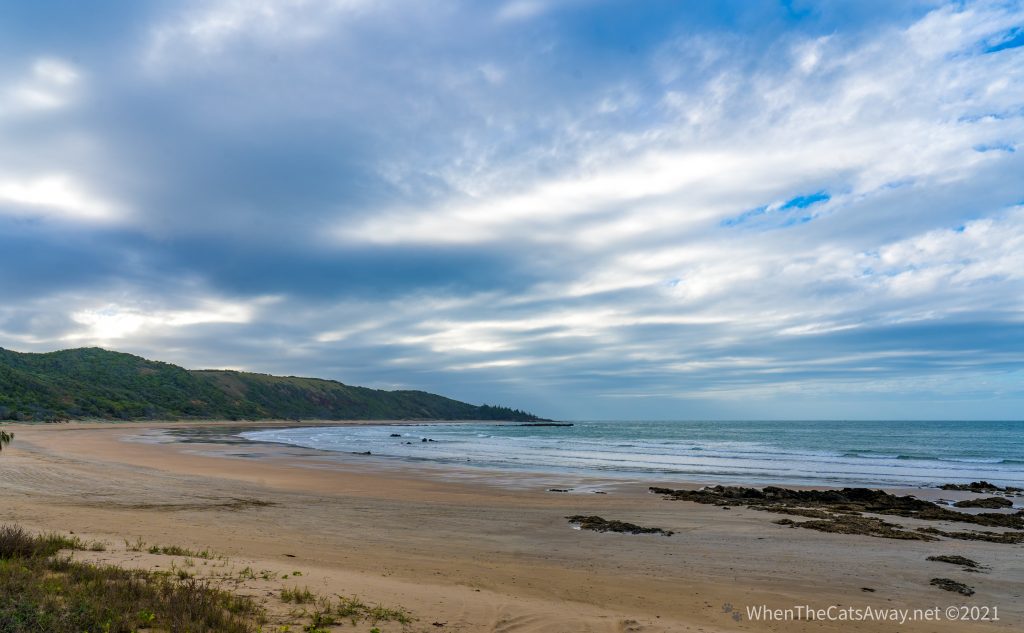
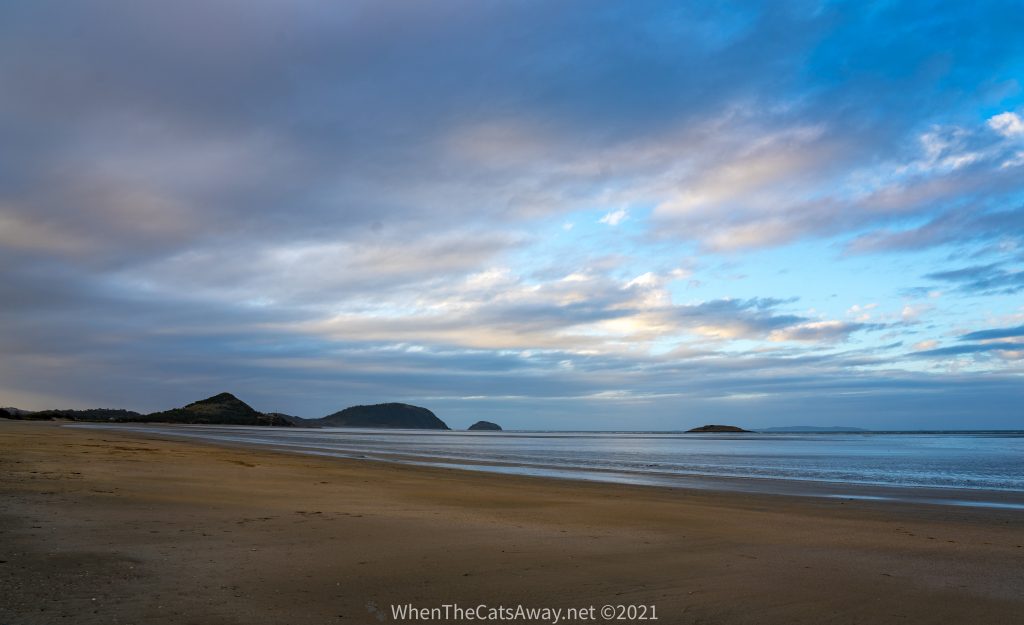
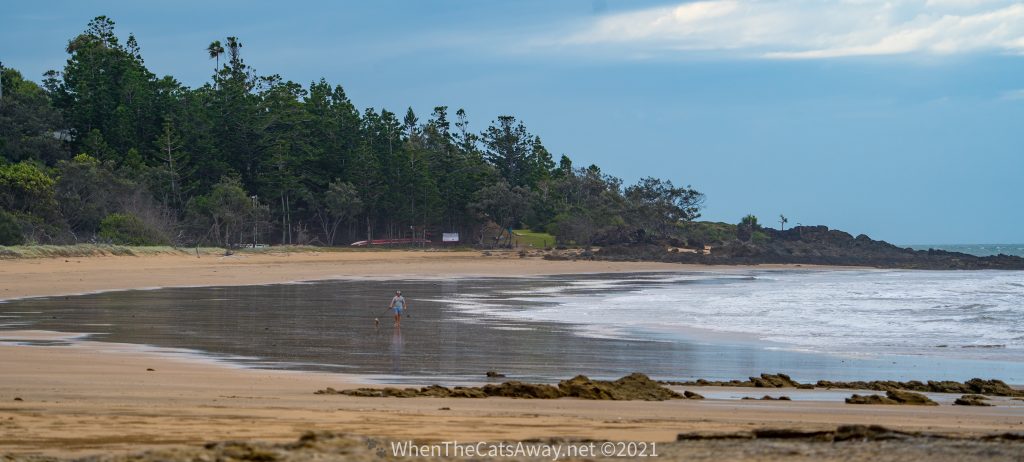
The chilly wind was unfettered down on the shoreline, icy cold fingers creeping down necks and up sleeves, sending shivers down our spine. We figured most of the feathered creatures this coast is well known for would be hiding in sheltered bays or behind rocks.
At the water’s edge sat a pair of Caspian Terns, taking off and gliding effortlessly over the waves. These are quite robust birds, but they still remained pointed into the wind so their feathers wouldn’t get messed up!

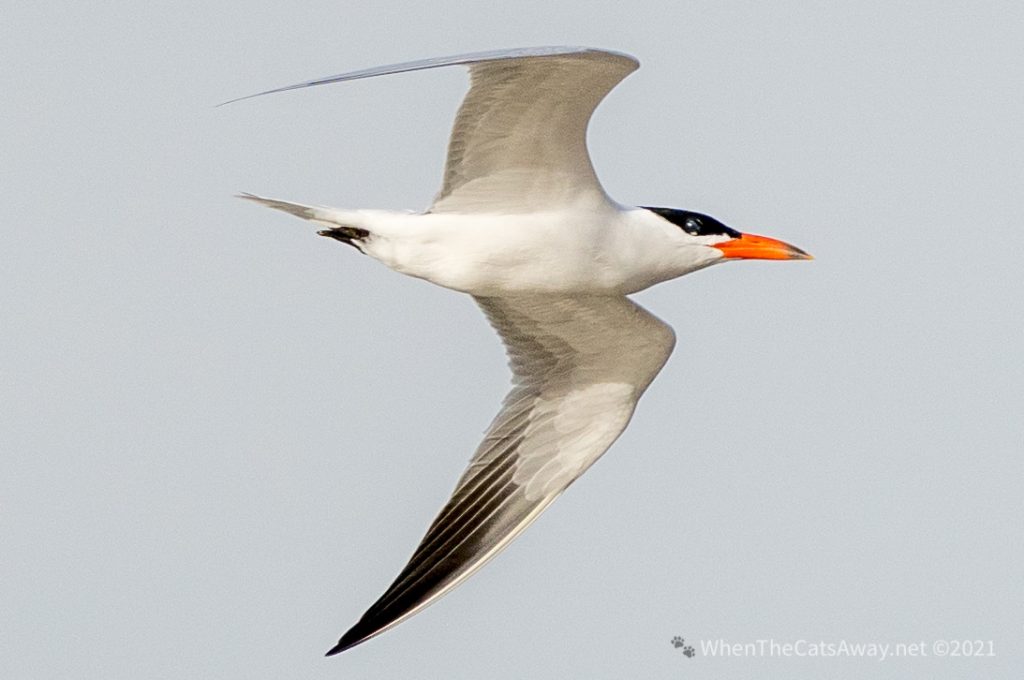
Shortly after they had moved on we were wowed by one of Australia’s three types of eagle swooping past, a White-bellied Sea-Eagle.
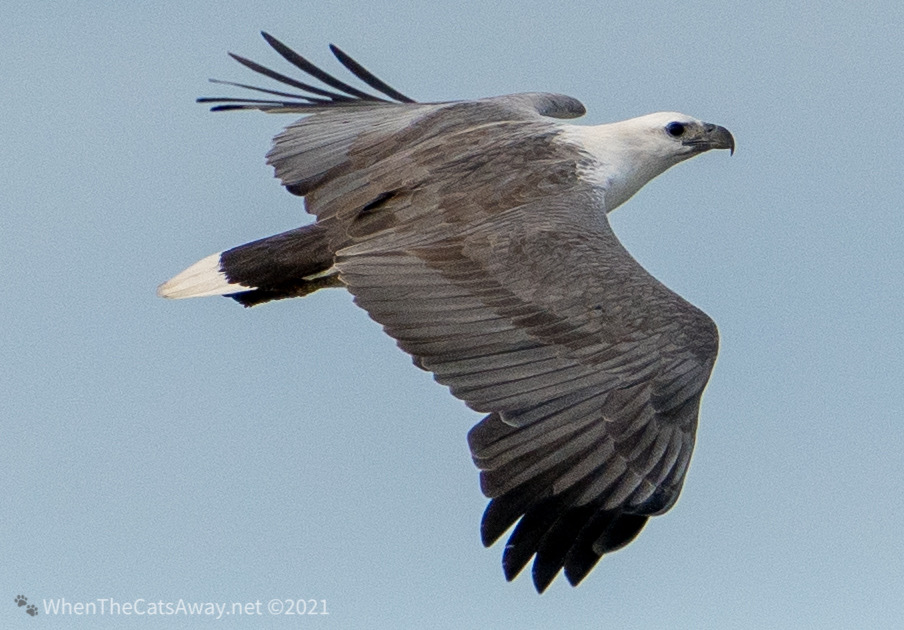
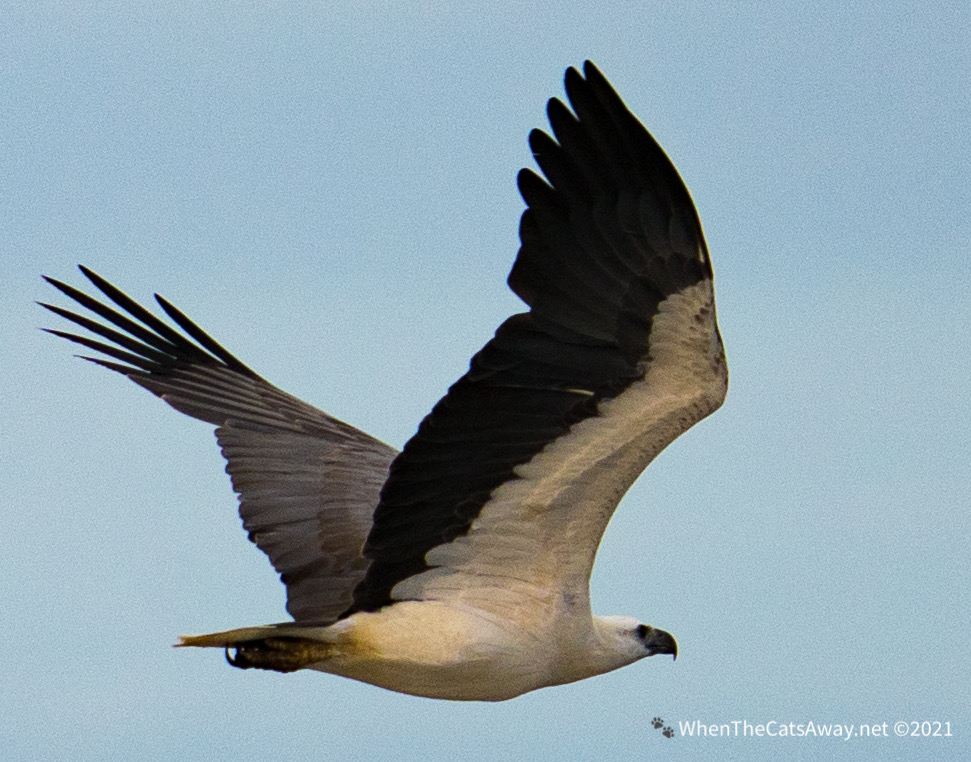
After a couple of kilometres walk along the shoreline we gave up and drove back to camp to warm up, deciding to have another go with the el-cheapo mouse-trap in the car.
We went outside at 8pm to check – Bingo! Got one. We reset the trap vowing to check again before bed. Yes! it had caught another one…Finally the following morning we awoke to find that a third had succumbed. Since then we have heard nothing, smelt nothing and there is no visual evidence of mice…we are hoping we have seen the last of our hitchhikers!
🐁 🐁 🐁
The following morning we moved on up to the town of Yeppoon where the Toyota service centre was going to have a look at our car and the leaking roof. We had a wander around town, leaving Tassie sleeping in the van in blissful sunshine.
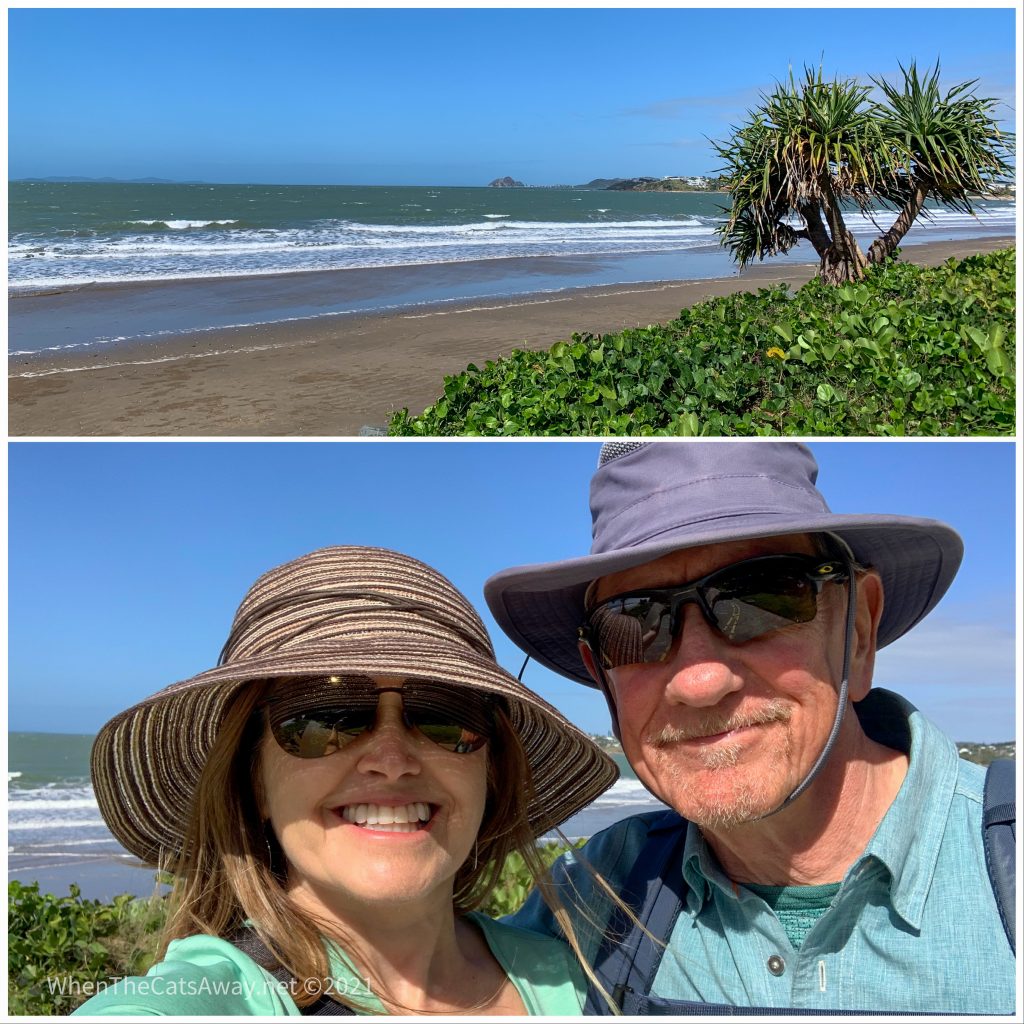
A few hours later we returned, the problems solved. It turned out some of the people who worked on the vehicle while we were away in Europe last year had failed to screw the roof racks on properly and the rain was leaking in through the holes! Their mistake cost us nearly $400, but at least it was all fixed, holes siliconed up – no more water ingress in our future. Thank goodness we didn’t have any disasters with the loose racks!
Our next destination was the small village of Byfield. This sweet settlement sits nestled in between Byfield State Forest, Byfield National Park and the huge Shoalwater Bay Military Training Area , and is just under an hour’s drive north of Yeppoon.
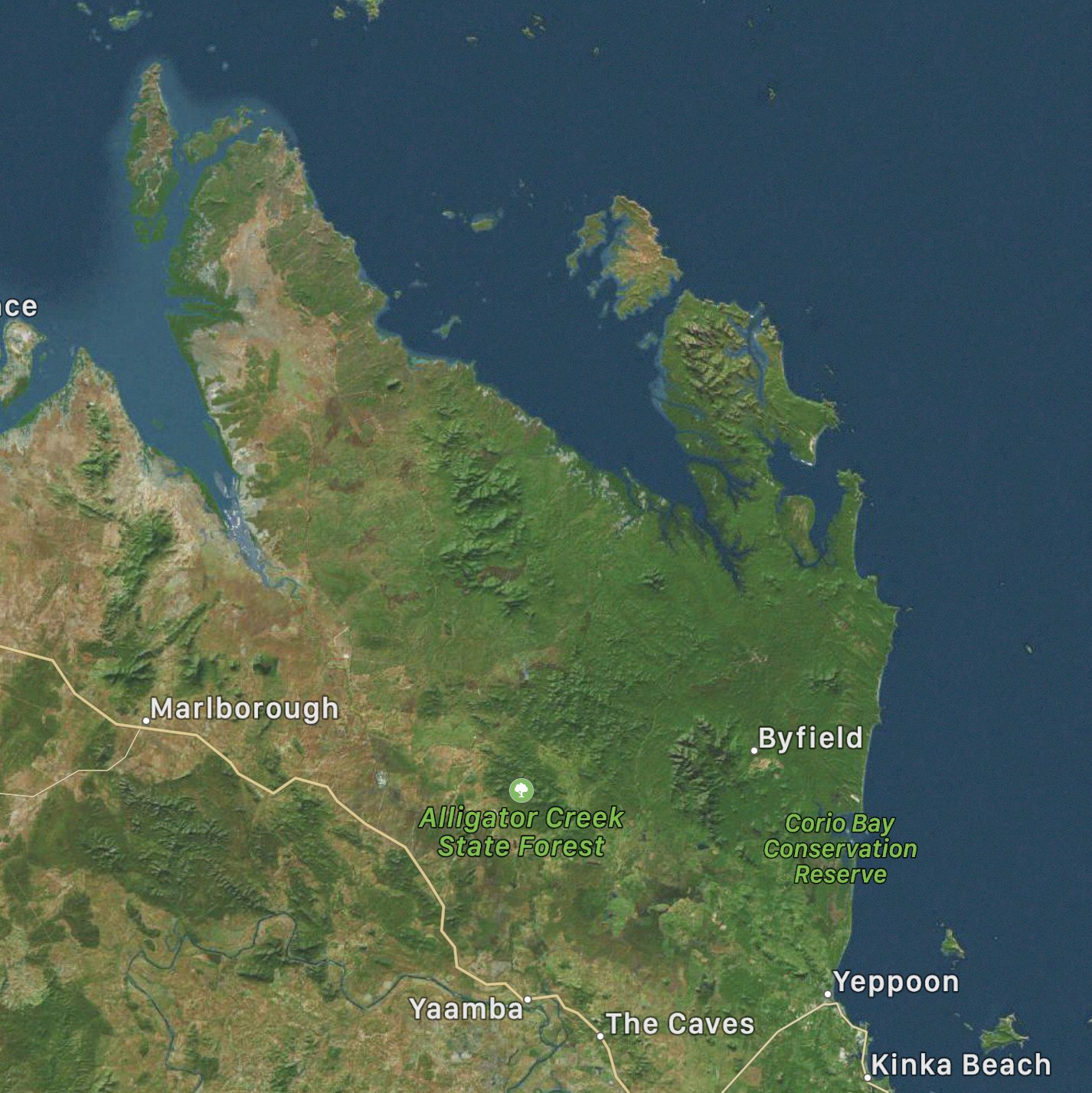
Much of this little known area of Queensland is relative wilderness – thick rainforest surrounded by mountains and leading down to remote sandy beaches. Our kind of place!
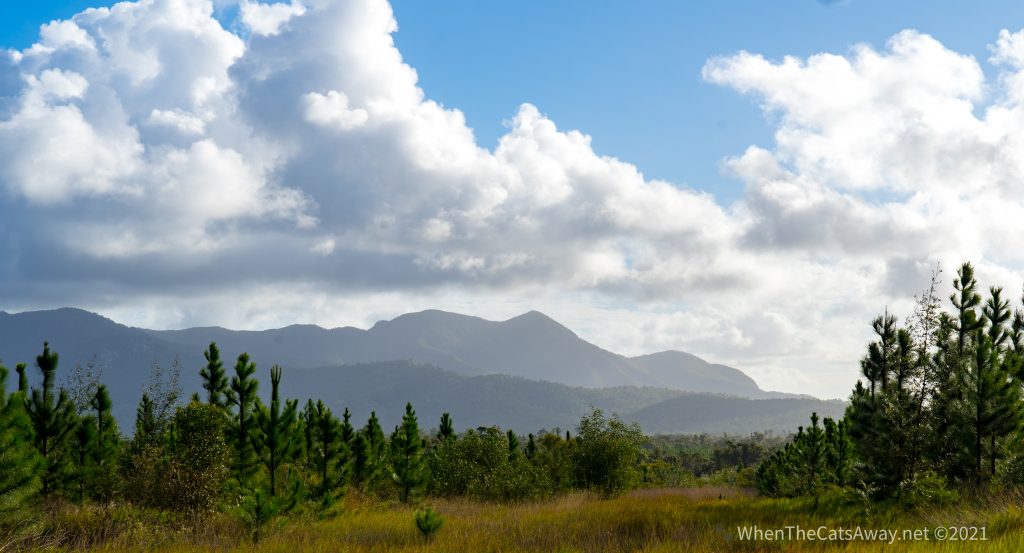
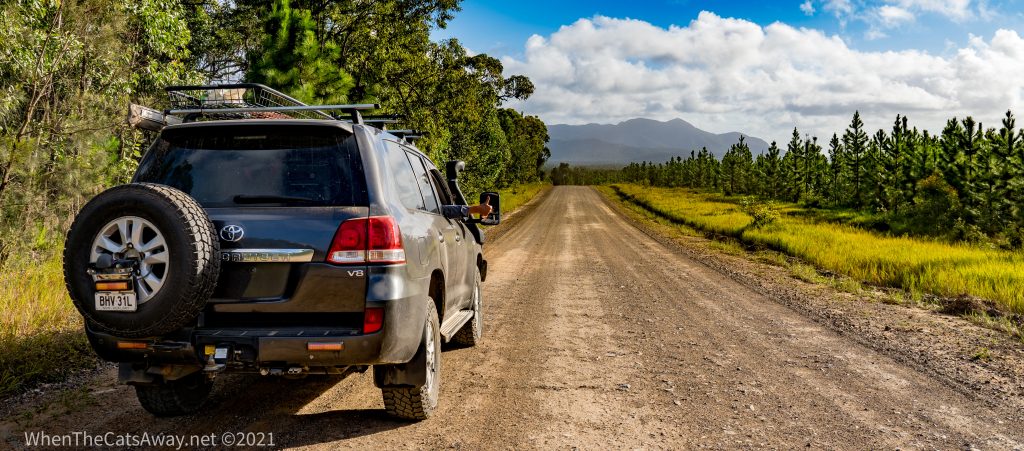
Our home for the next three nights was beautifully lush and grassed, and we learned used to be an old mandarin orange orchard. More than thirty years ago, when Beth and her husband purchased the plot, the trees were hardly producing any fruit, so it wasn’t a hard decision to remove them and landscape the land. We’re pleased, because it resulted in Byfield Camp stay – no facilities other than a couple of long-drop toilets and a rustic shower, but being pretty self-sufficient, it suited us perfectly.
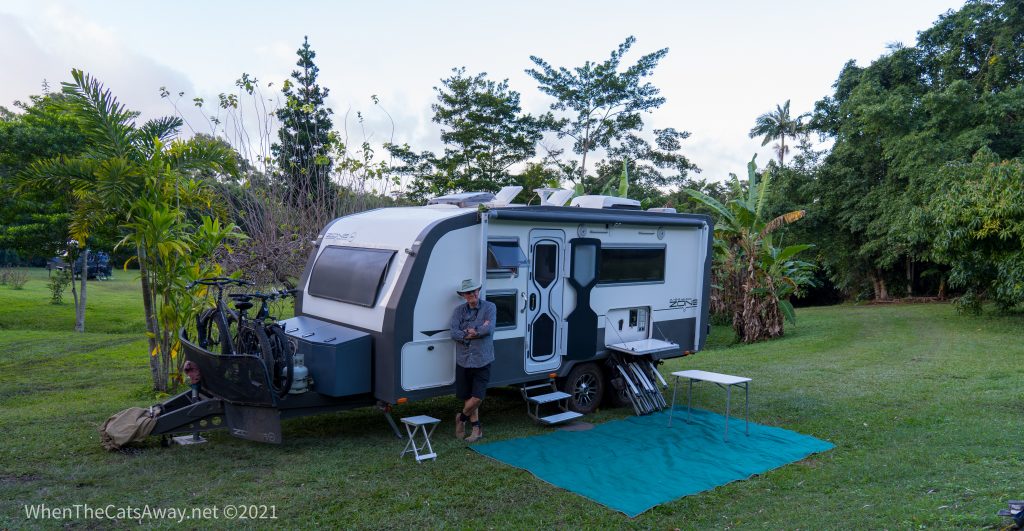
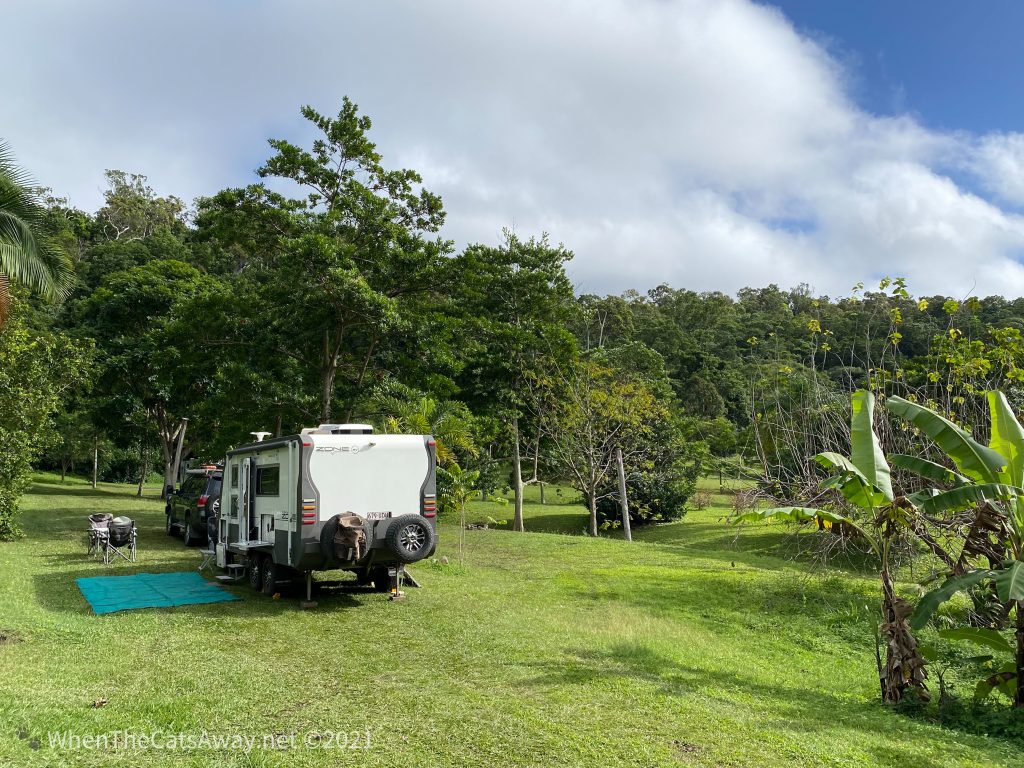
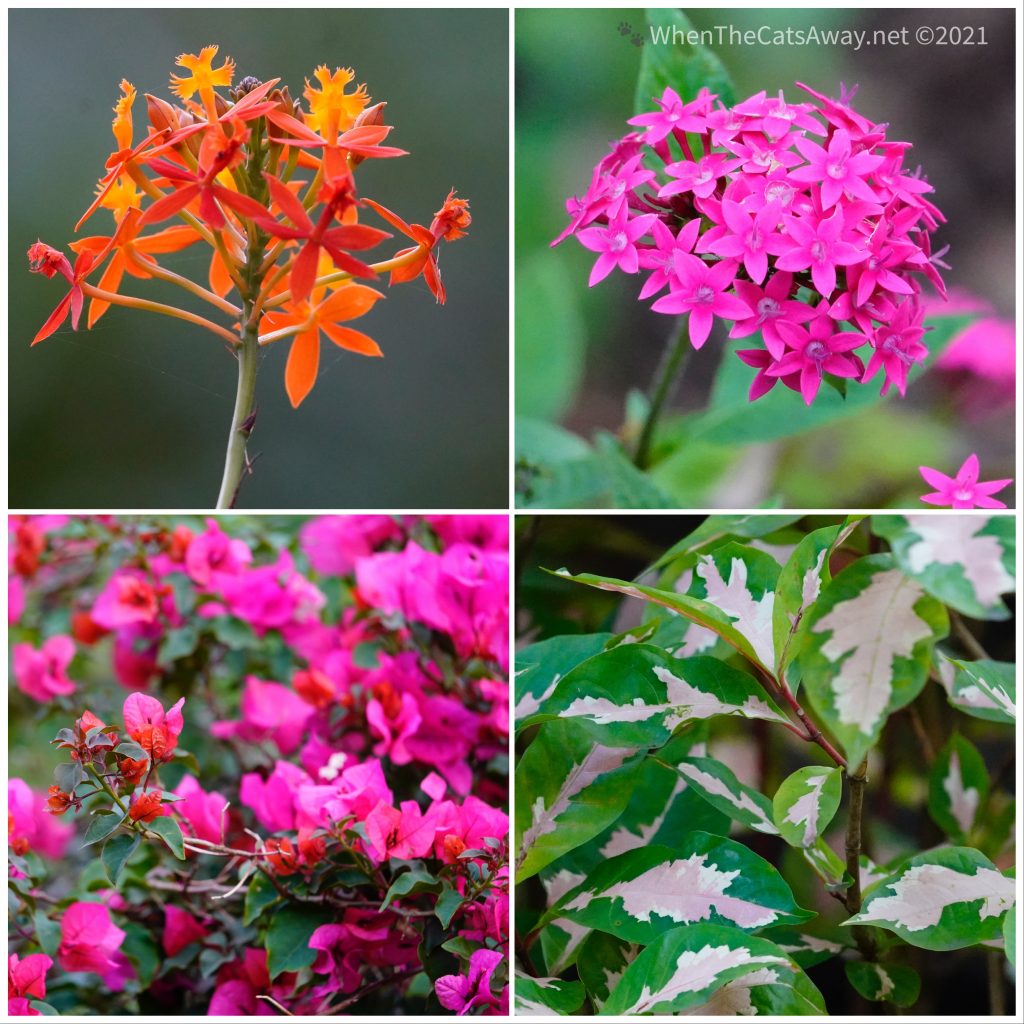
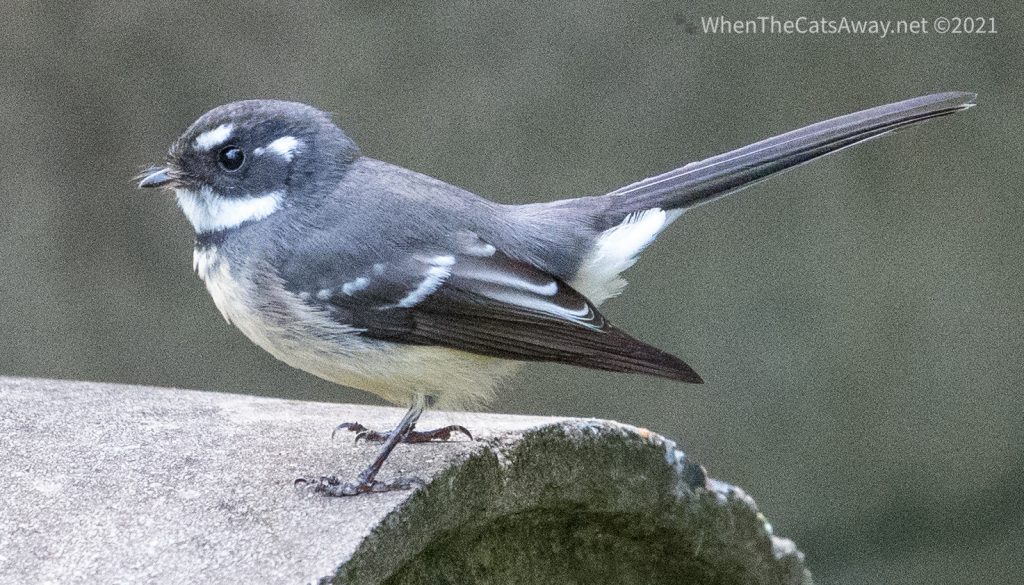
It was so peaceful – after our long day getting the car fixed, we arrived just before sunset and immediately heard blood curdling cries from the forest behind us. It turns out this sound is the cry of the Bush Stone-curlews, which choose dusk to make themselves known. During the day they are rarely seen, choosing to stand still like statues on the forest floor, or pick their way quietly through the undergrowth. We were lucky to spot one on the edge of the forest the next day.
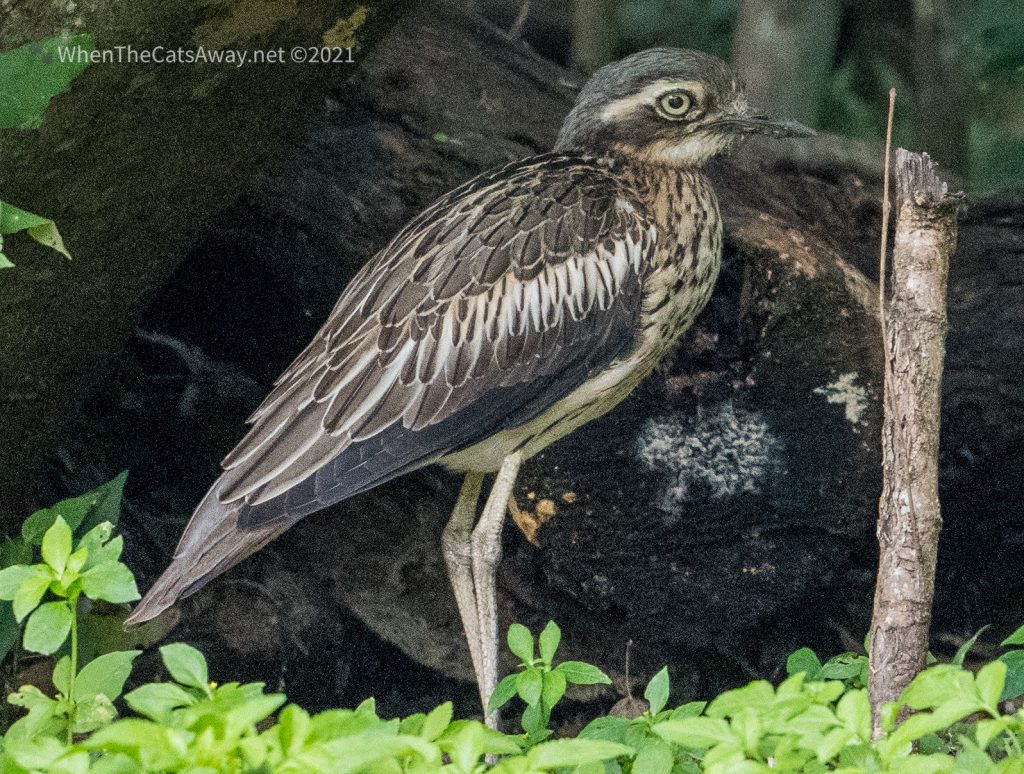
We had a look around the grounds in the morning. We could hear a lot of bird life, much of it very high up in the canopy of the trees and inaccessible. But rounding a corner beside the dam we saw a couple of Forest Kingfishers. They were clearly used to seeing people and comfortably sat in a tree beside the water, occasionally flying down to catch a lizard or frog from the long grass below. Forest Kingfishers are more similar in their diet to Kookaburras, not necessarily relying on fish and other aquatic creatures for meals.
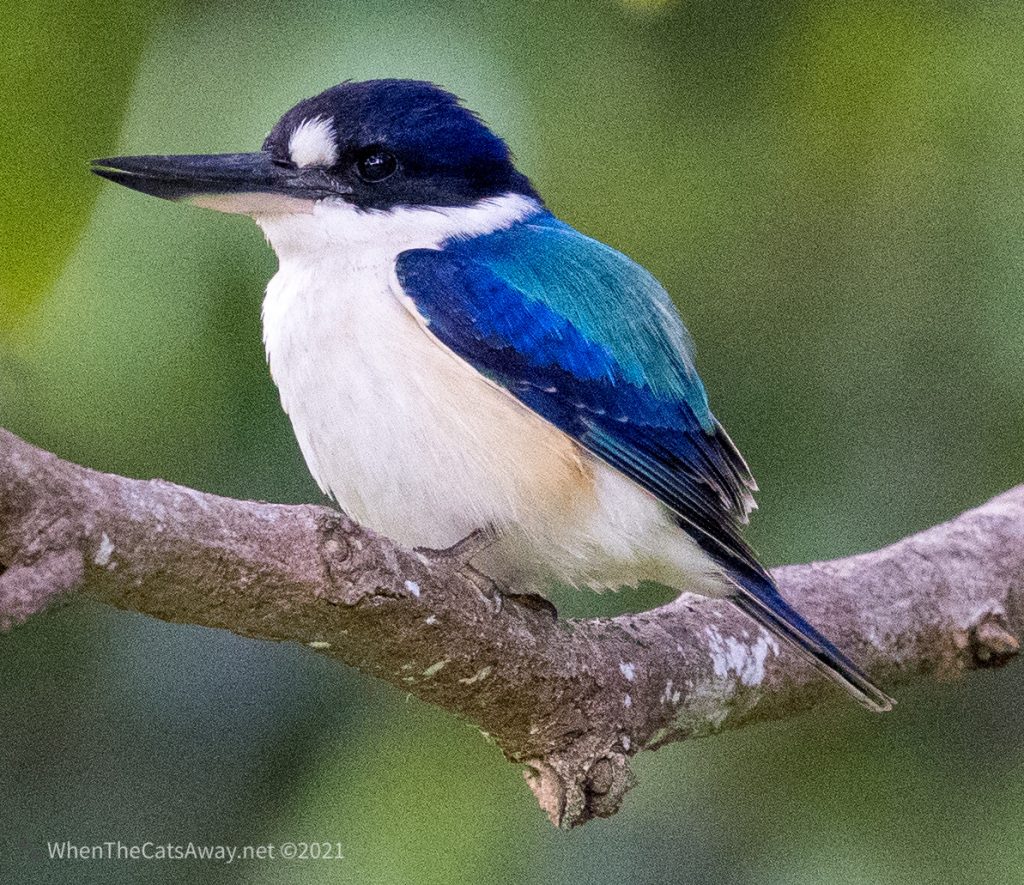
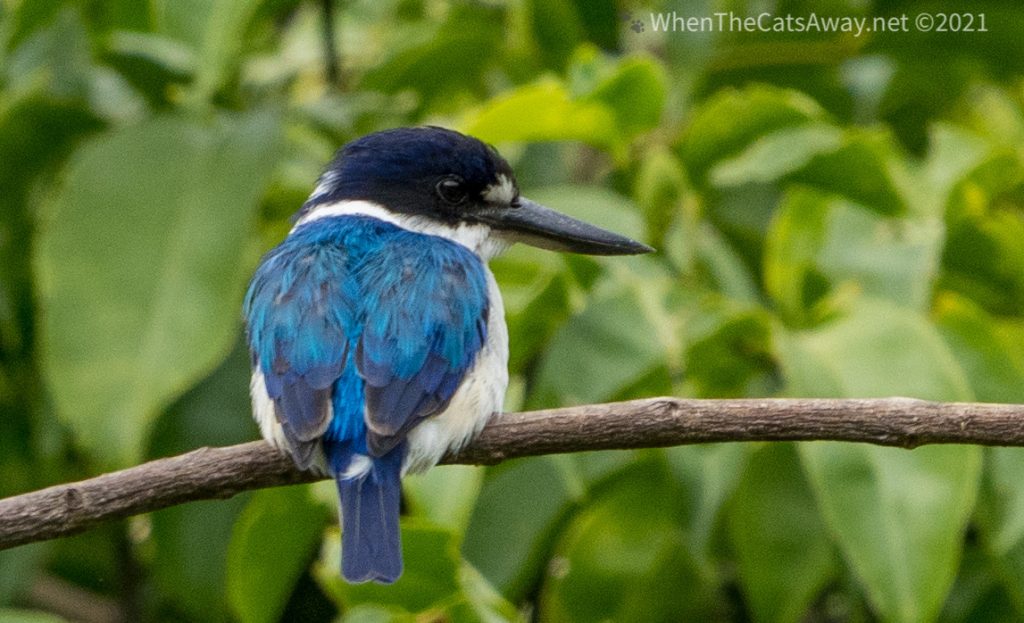
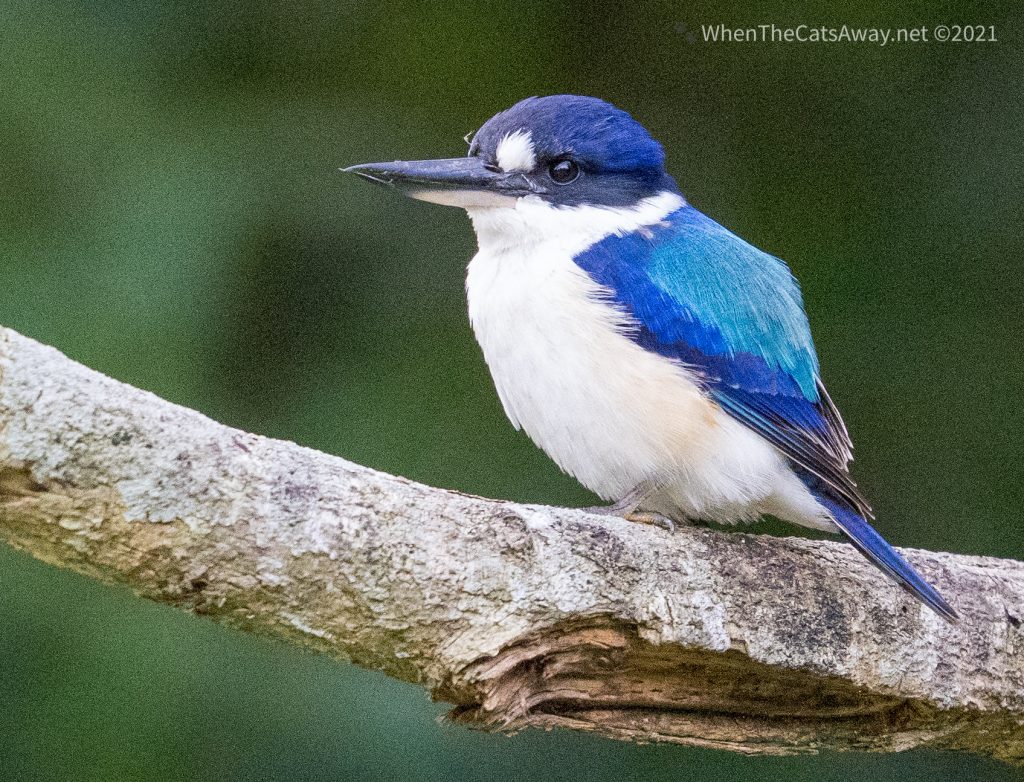
Later in the day we took a drive over to Waterpark Creek in the National Park for a look around. On our way there I spotted an Emu strolling alongside the road, so we pulled over for a look…and he thought exactly the same thing as he strolled right on over to inspect us. Lucky Tassie wasn’t in the car – she already is afraid of birds – this large visitor might have put her off travelling for good!
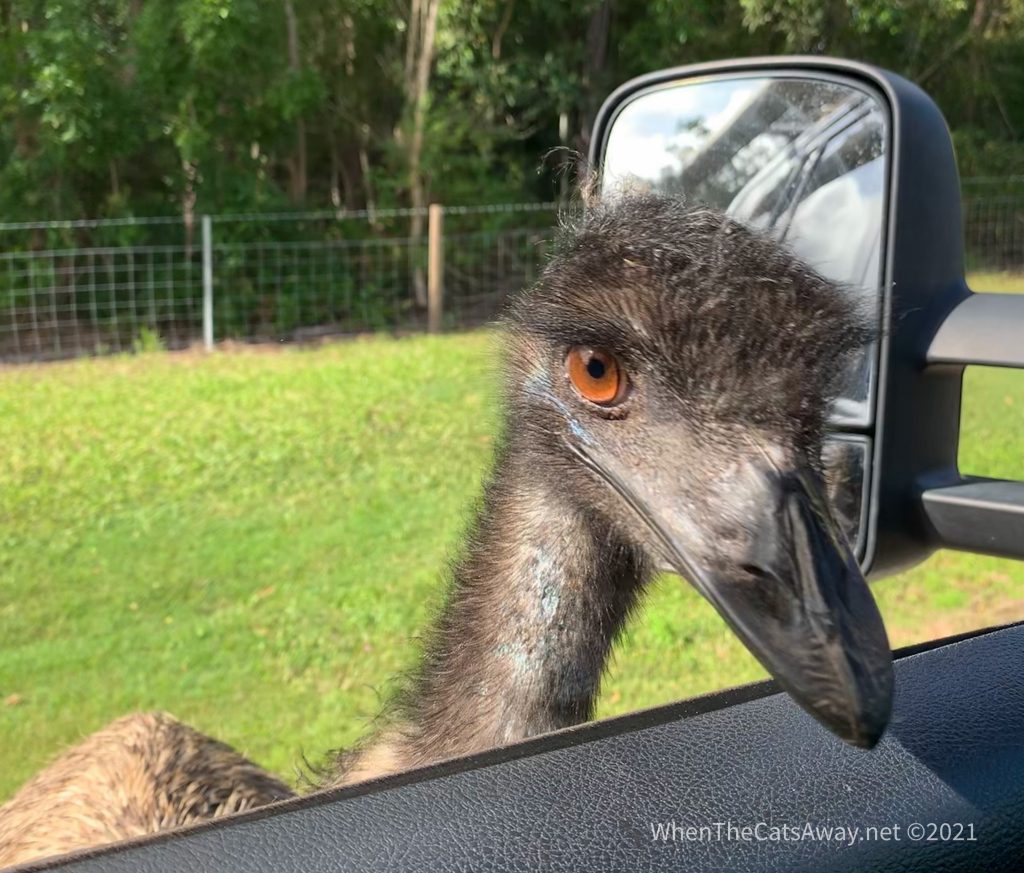
Once in the park we found a lovely pair of Kookaburras and saw the multicoloured Wompoo Fruit Doves, last photographed in Cape Tribulation on one of our earlier trips. This time they stuck to allowing us fleeting glances as they flitted through the canopy, not hanging around for a picture.
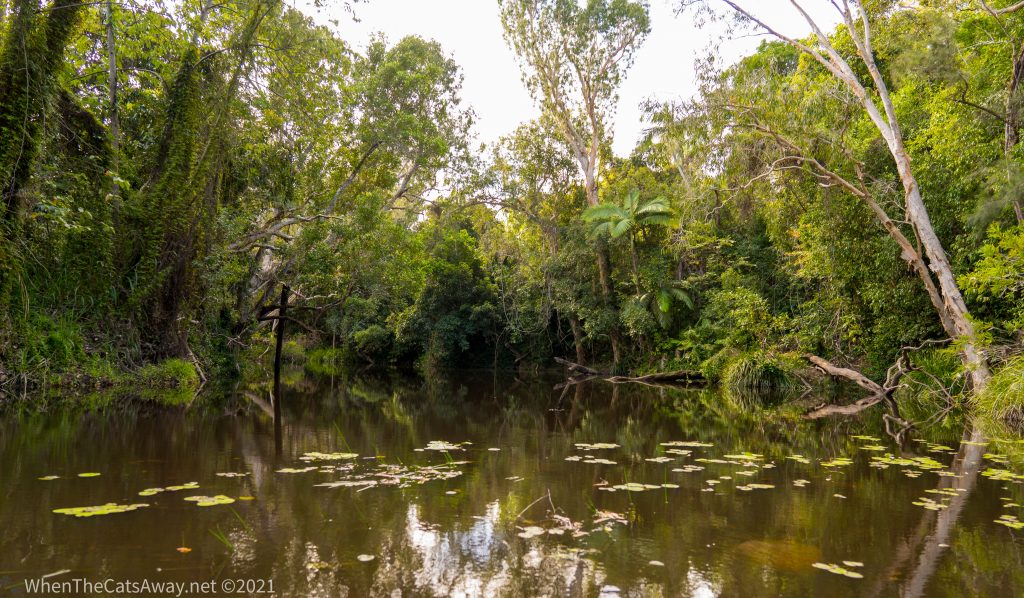
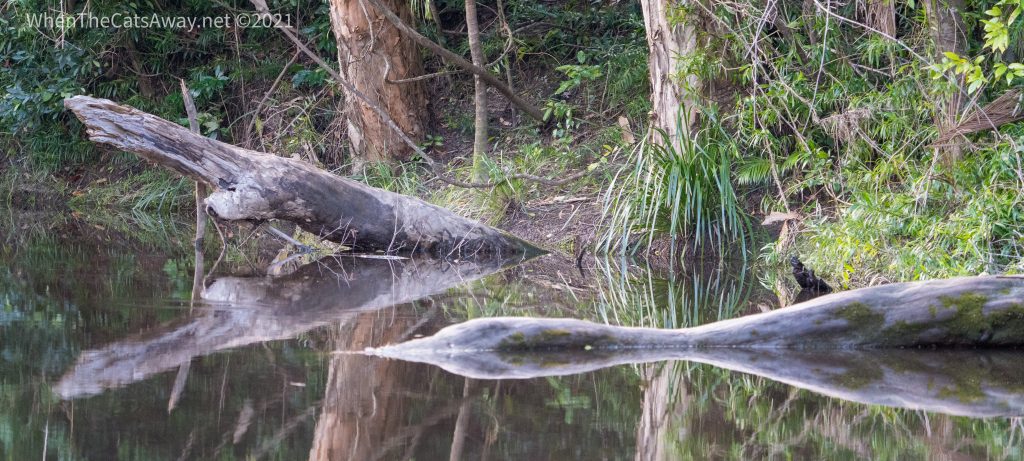
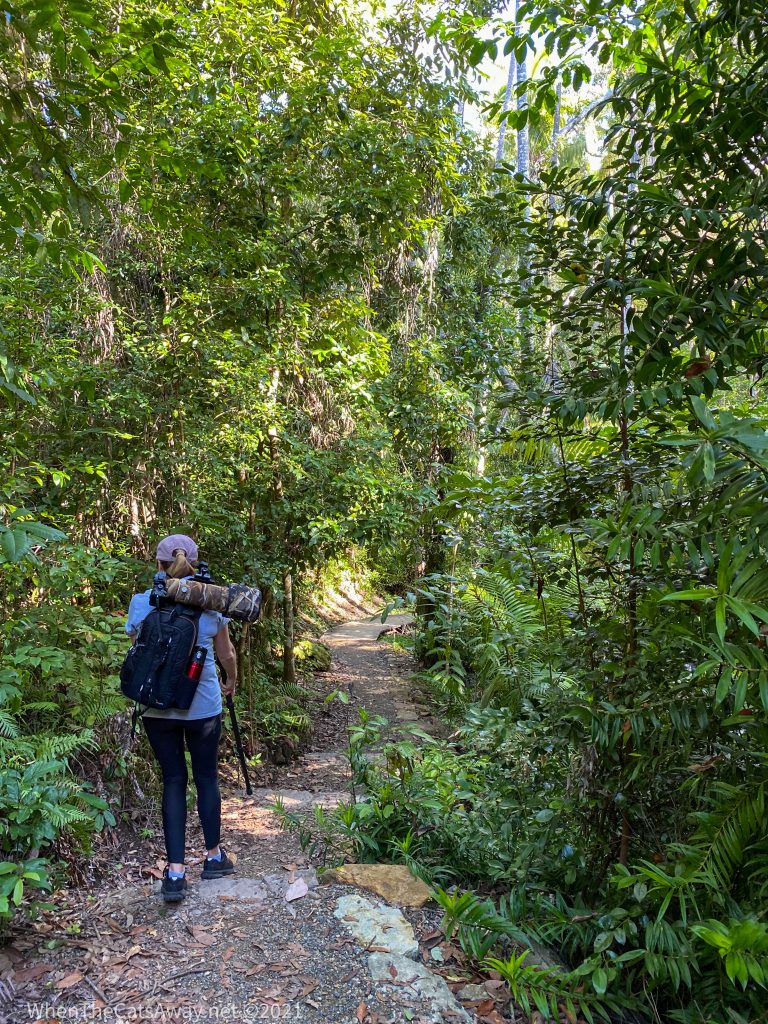
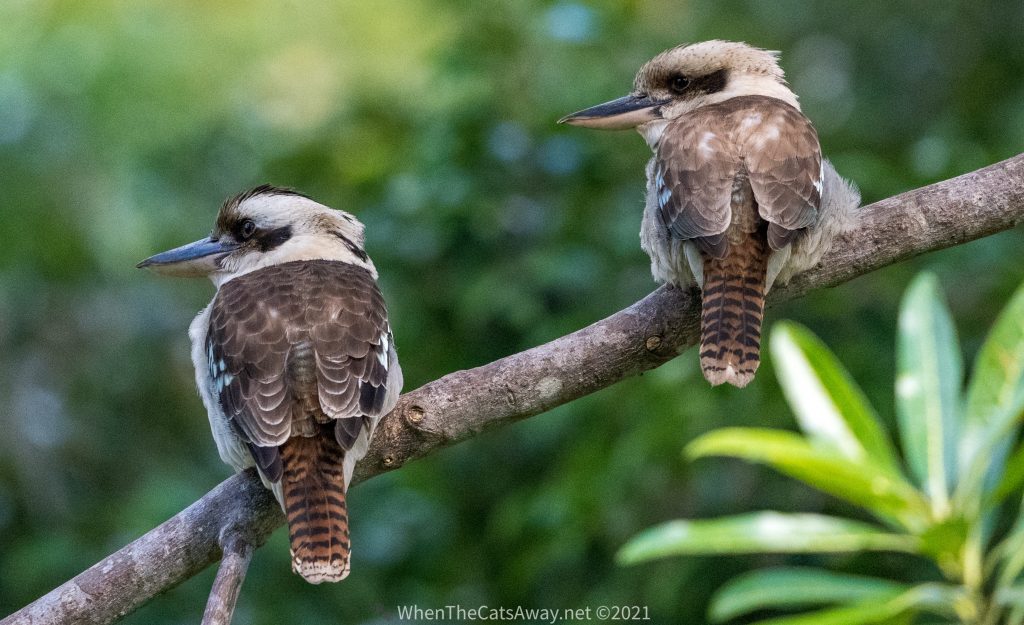
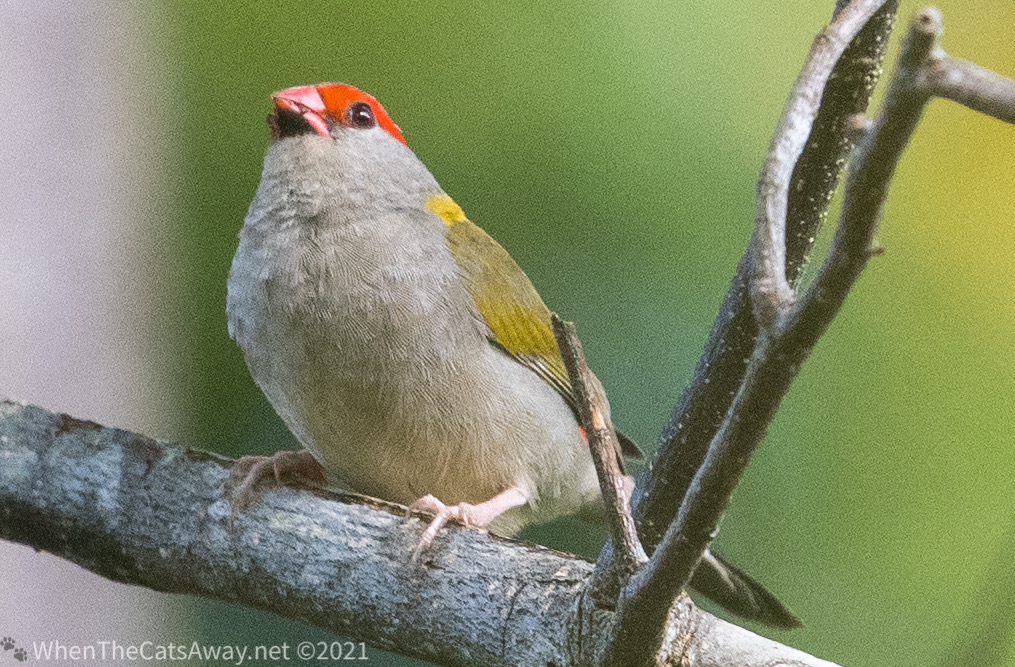
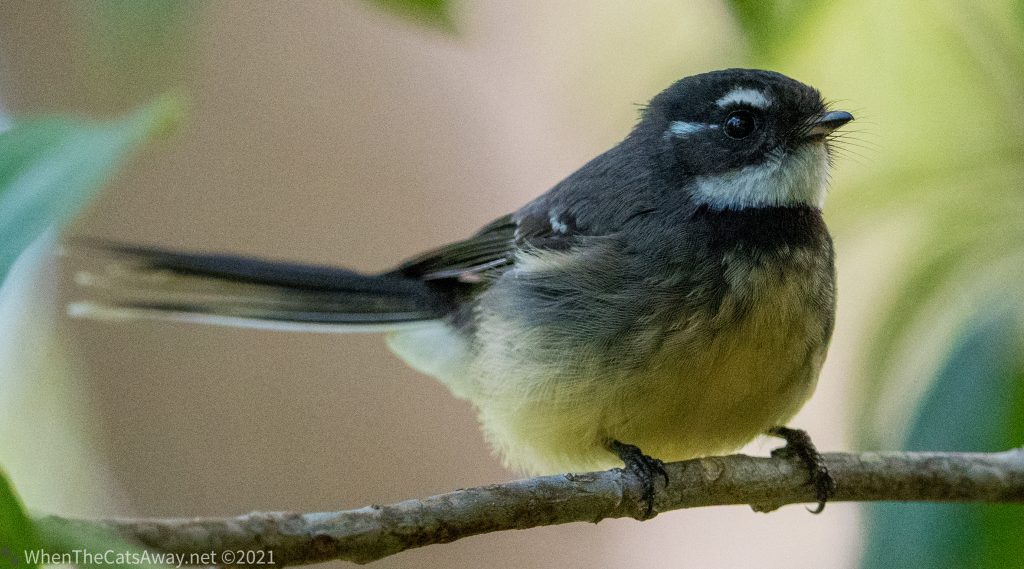
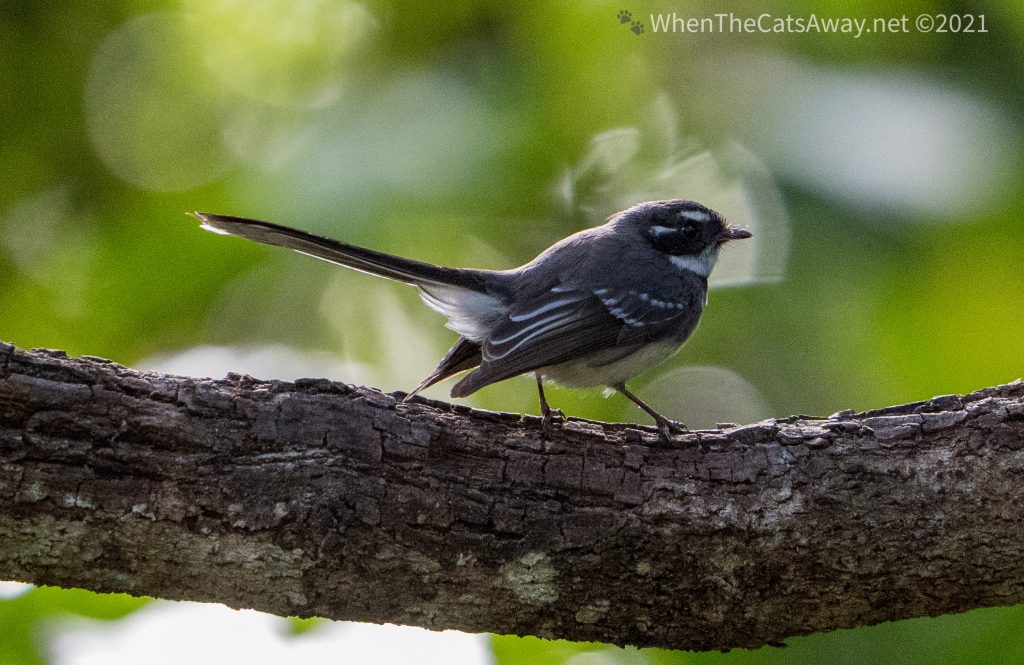
The National Park stretches down to the coast, with a few water crossings leading to a sandy track where you need to deflate your tyres to continue. After all the car issues of the past few days we chose not to risk another puncture or other problem so headed on back to camp via a local pottery. We purchased three lovely little pots.
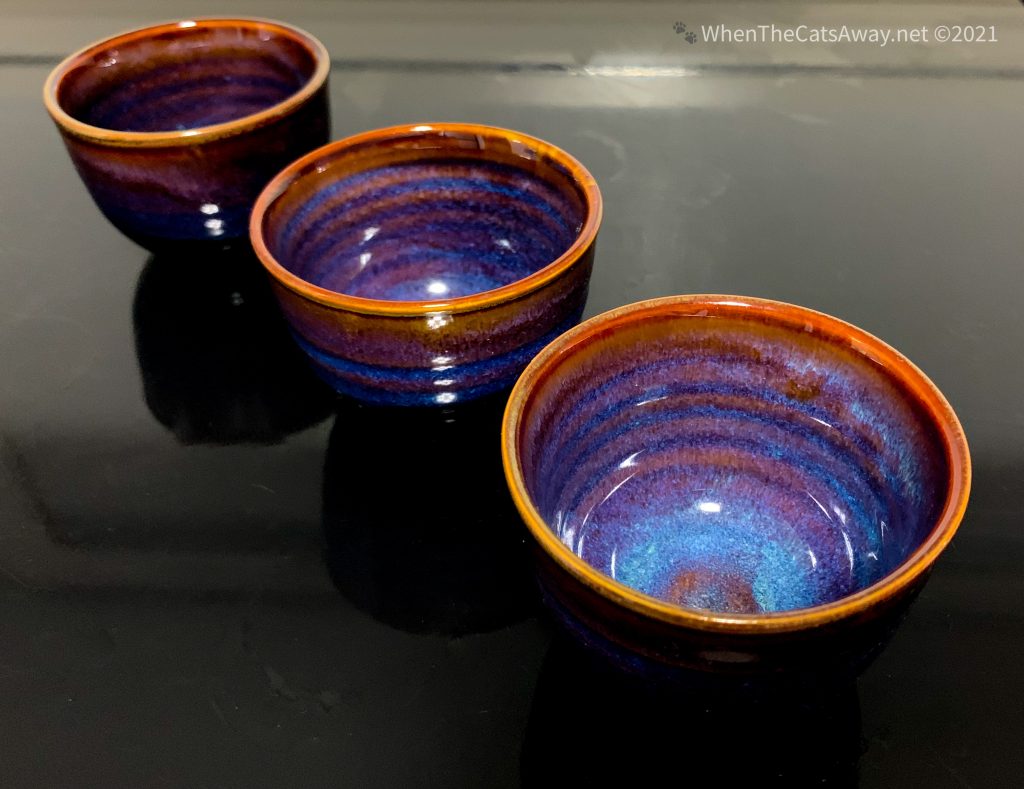
This land is Darumbal Country. We thank and acknowledge these First Nations people as the traditional custodians of this region of Queensland.
The Darumbal people have a long history in this area, living in and off the land, its creeks and the ocean. When white settlers arrived in the region during the 1800s, the usual horrors of murder and displacement ensured. More than 3,000 Darumbal people were either killed or forcefully removed from the region, and there are many horrible stories about how the new landowners poisoned, chained and drowned community members in order to remove them. Much of the virgin rainforest was cleared for farming, and what we see now is mostly regrowth.
The slow glimmers of turnaround for the Darumbal people has been in relatively recent times, with Native Title claims first made in the mid 1990s, and finally land returned to the community in 2007. In 2016 they were recognised by the government as the Traditional Owners of the land along this coastline and up to Marlborough, north of Rockhampton. Much of the traditional lands sit within what is now the military training area, surrounded by high barbed wire fences. In 2019 an agreement was signed with the military allowing them access to their sacred sights. Things are looking up.
Meanwhile, back at camp, Princess Tassie just loved her new home, particularly after the four dogs and their families had left! She went for quite a few accompanied walks, loving the greenery, new sights and smells as much as us. Fortunately the closest we got to any slithering reptiles was this snakeskin on a woodpile Tassie was exploring. We encouraged her to explore new areas after that!
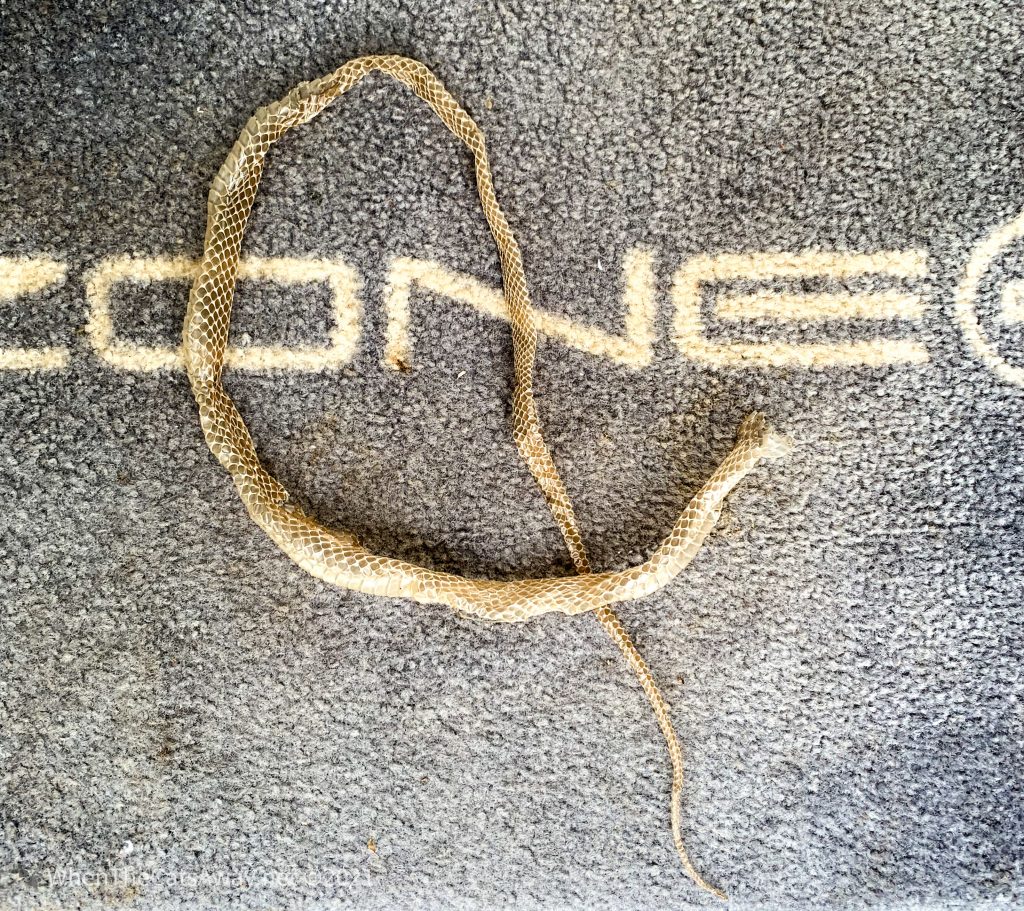
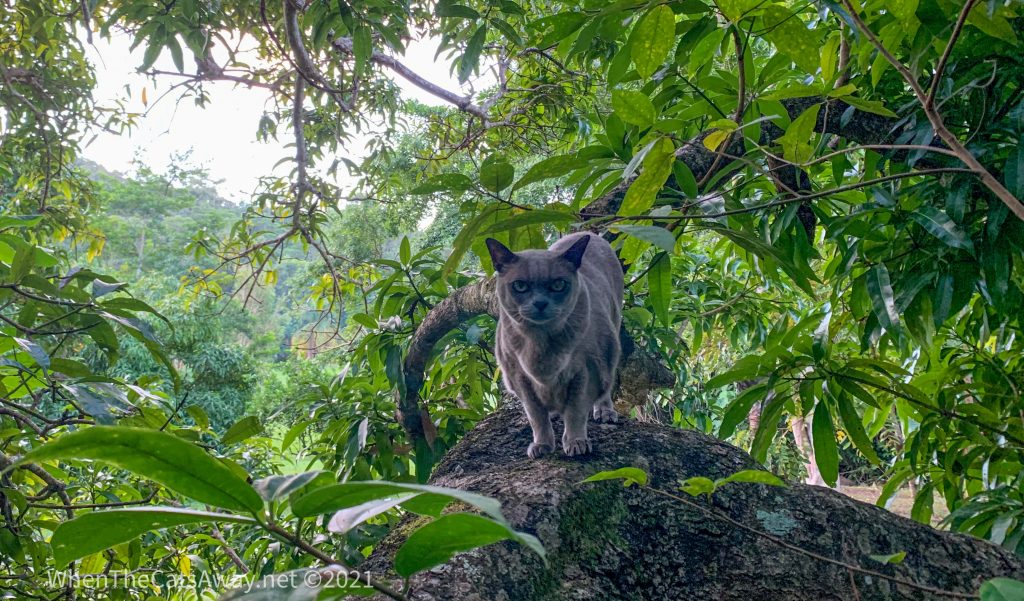
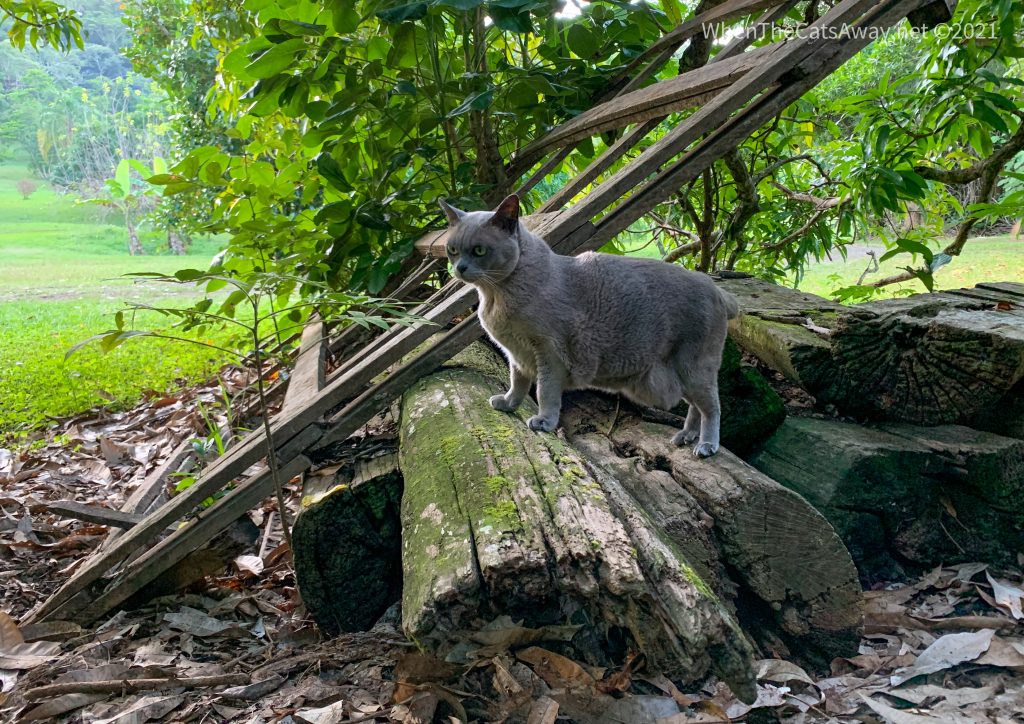
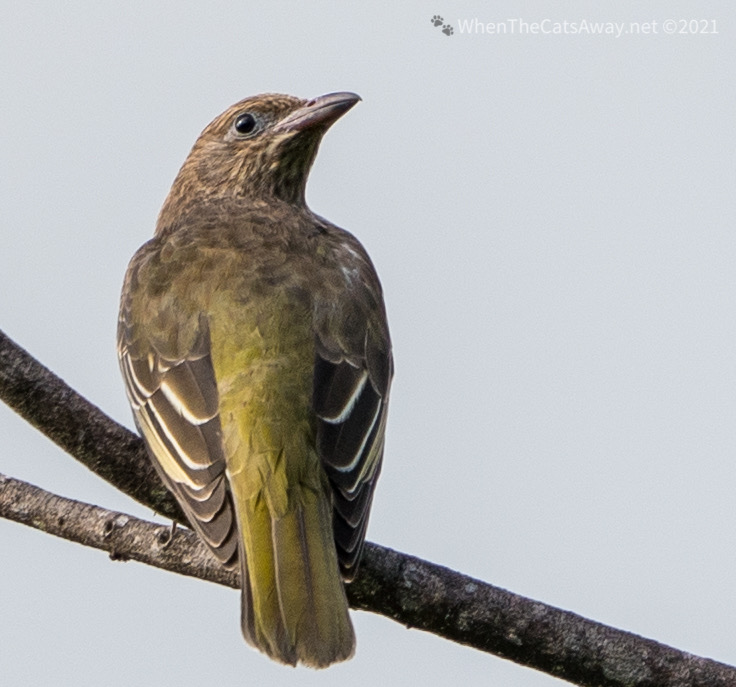
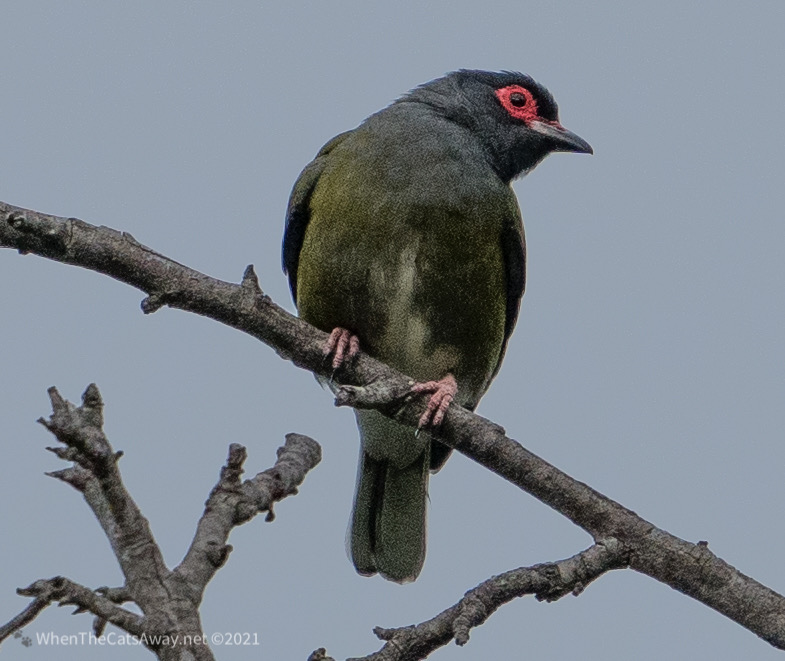
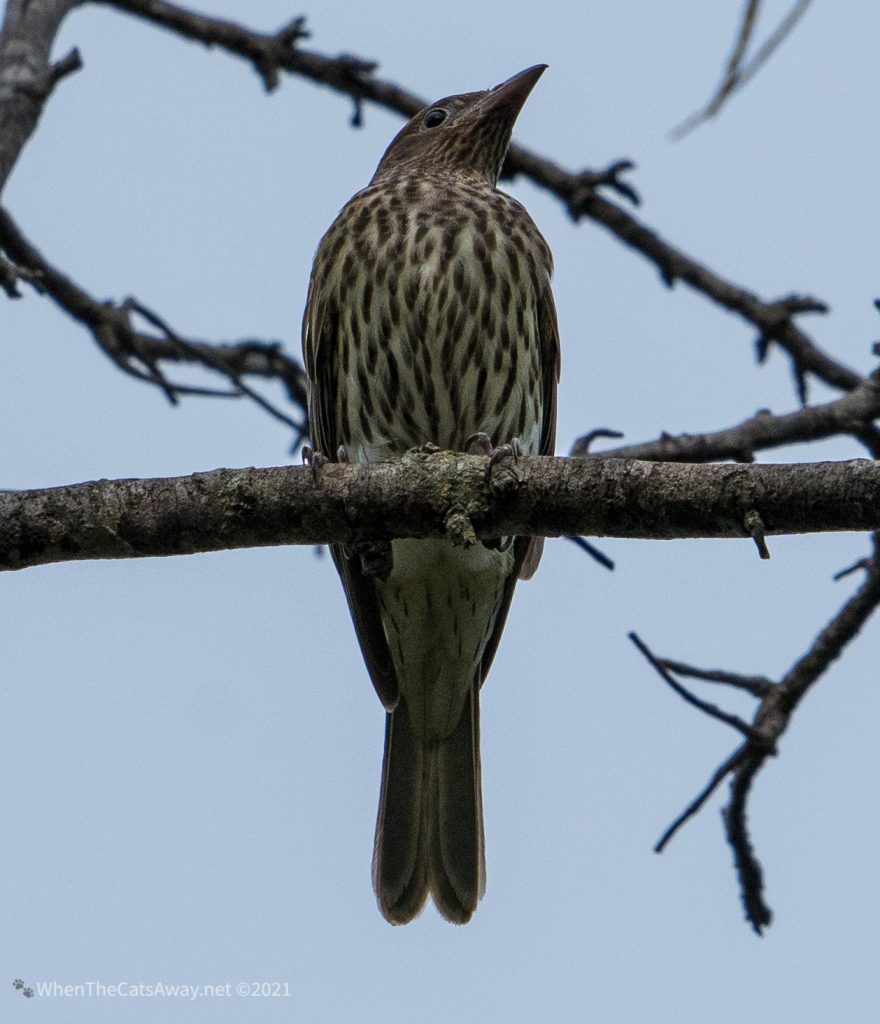
We had a brilliant two days – the second being a little wetter and therefore a little more anxious as we didn’t get as much solar power as we would have liked – but we got though fine.
One of our fellow campers was a maths teacher from Brisbane who was having a little downtime in the school holidays, chilling out in her camper reading books and enjoying the ambience. We discovered it was her birthday, so our campsite owners baked a homegrown kumquat cake for her, and Mark and I provided nibbles and a chicken red curry for dinner. We lit a campfire and whiled away the evening with many laughs and a few too many beverages consumed. All in a good cause!
We moved on the next morning feeling a little dustier than planned!

